Situationer: Tracing Waziristan puzzle back to Faqir of Ipi
Mirza Ali Khan, popularly known as Faqir of Ipi, was the saintly figure who challenged the might of the British.
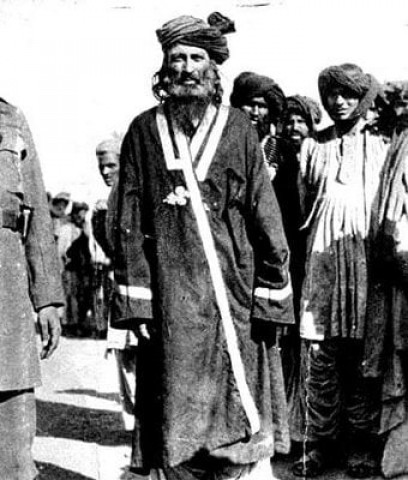
To understand the Waziristan conundrum, go back 78 years. The year is 1936. The place is Mirali, North Waziristan. A Hindu girl converts to Islam and elopes with a young Pashtun schoolteacher.
The girl’s mother alleges forced conversion. A court sentences the youth to two years in jail and returns the girl to her parents. Incensed, tribesmen convene a jirga and declare a jihad on the British colonial power.
An ensuing series of deadly battles create a legend: Mirza Ali Khan, popularly known as Faqir of Ipi, the saintly figure who challenged the might of the British. Faqir of Ipi became part of the local folklore and his grave a revered shrine.
No wonder, North Waziristan has become a wellspring of militancy where a strange mix of hardcore militants, local and foreign, held sway until June 16 – the day when the Pakistani military decided to launch a massive operation, codenamed Zarb-e-Azb.
In the 1980s, the local tribes, including the Wazirs and the Dawars and the Mehsuds from neighbouring South Waziristan, fought alongside the Pashtun ‘mujahideen’ against the Red Army in Afghanistan who later morphed into the Taliban.

In subsequent years, Waziristan became a magnet for global jihadis, attracting al Qaeda, Islamic Movement of Uzbekistan, East Turkistan Islamic Movement, or Turkistan Islamic Party, Haqqani Network, Tehreek-e-Taliban Pakistan, and a myriad of other local and regional extremist groups. Western officials believe some of these groups – especially Hafiz Gul Bahadur’s Shura-e-Mujahideen and the Haqqani Network – are considered assets by Pakistan’s security establishment in its quest for ‘strategic depth’ in Afghanistan. Waziristan is the largest of all tribal regions. Its strategic location provides an easy transit for fighters into Afghanistan. Apart from this, the main trade corridor – Tank-Wana-Angoor Adda, and onwards to Afghanistan – also runs through the region.
The militant groups used Waziristan as a springboard for launching attacks on US-led foreign troops in Afghanistan and acted as counterweight to the TTP that is at war with the Pakistani state. This set off a guessing game in the local and international media. Some analysts believe Operation Zarb-e-Azb will be selective, which means it’ll spare the ‘good Taliban’ like the Haqqanis and Gul Bahadur. Others see a reconfiguration of the Waziristan chessboard, or a possible realignment in the region.
In background interviews with The Express Tribune, security officials, however, quashed all such speculations. “The army chief, Gen Raheel Sharif, has already made it clear that the operation will target all terrorists without any discrimination,” one official said. “There are no good Taliban or bad Taliban. Anyone who challenges the writ of the state will be targeted.”
Warplanes and helicopter gunships have been strafing hideouts of militants since the launch of the operation with sporadic gunfights in some areas, though a full-scale ground offensive has been delayed till the evacuation of all civilians. According to an official tally, 327 militants and 10 soldiers have been killed thus far.
Another official said Operation Zarb-e-Azb has debunked the myth of invincibility about Waziristan. “It has long been a thorn in the military’s side. Their major concern was IED-making factories in the region,” he said. “North Waziristan also had the main communication centre of the Taliban.” The official claimed that one IED-making factory and the communication centre were flattened in the June 17 airstrikes in the Hassu Khel area of Mirali tehsil.
It won’t be a sweep operation, however. Door-to-door operation in such a difficult mountainous terrain is not possible. The military is said to have identified the troubled spots and action would be targeted against them. “The military has identified vulnerable points,” said a third official.
The target appears to be to clear up these points, which include Miramshah, Datta Khel, Mirali, Ghulam Khan, Boya, Hassu Khel and Shawal Valley. “Control of these areas would mean operational domination of the entire agency,” the official said.
Zarb-e-Azb would be modelled on the Operation Rah-e-Rast, codename for the 2009 decisive battle against radical cleric Mullah Fazlullah [now the TTP chief] and his fighters who had led a bloody campaign for the enforcement of their puritanical version of sharia in Swat Valley. This operation dragged on because Pakistan Army at that time wasn’t properly trained in counter-insurgency and asymmetric warfare.
However, the military’s assessment is that the Waziristan operation would not prolong. “We’re not expecting this operation to drag on,” said the second official. “Like Swat, the operation will involve four stages – that is to clear [the region of militants], to hold, to build and then to transfer [the control to civilian authorities].”
Western media has claimed that most Waziristan fighters might have fled to neighbouring Afghanistan. Pakistani security officials say some militants might have slipped away taking advantage of the porous border. “Security forces have plugged most escape routes – but it’s possible that some terrorists might have dispersed because they cannot take on the security forces in head-on fights,” one official said. Possibly, some of them might go into hibernation in their sleeper cells. North Waziristan has emptied out. Over 500,000 tribesmen have left, mostly to the neighbouring districts of Khyber-Pakhtunkhwa – including Bannu, DI Khan, Kohat, Hangu and Peshawar. Some of them have crossed over into Afghanistan to seek shelter in the provinces of Paktia, Paktika and Khost. “The military wanted to avoid civilian casualties. Now that the civilians have evacuated, collateral damage would be ruled out,” said the official.
Faqir of Ipi became a legend because he challenged the occupation forces of an arrogant colonial power. He didn’t kill his own people, he fought for them. Conversely, the Taliban are spilling the blood of their innocent countrymen. They’re inflicting losses, in men and treasure, on their own country. And this, certainly, wouldn’t make them legends.
Published in The Express Tribune, June 27th, 2014.

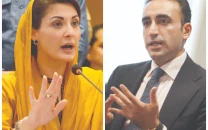
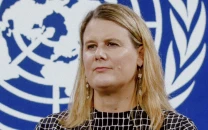
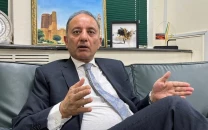
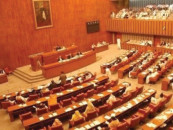














COMMENTS
Comments are moderated and generally will be posted if they are on-topic and not abusive.
For more information, please see our Comments FAQ